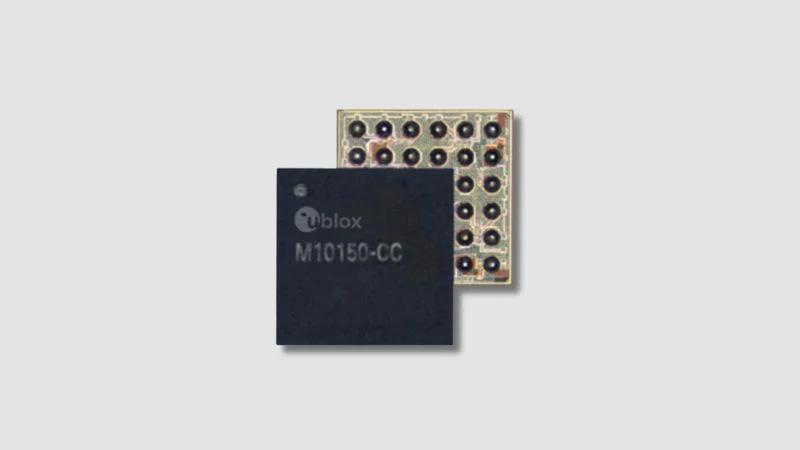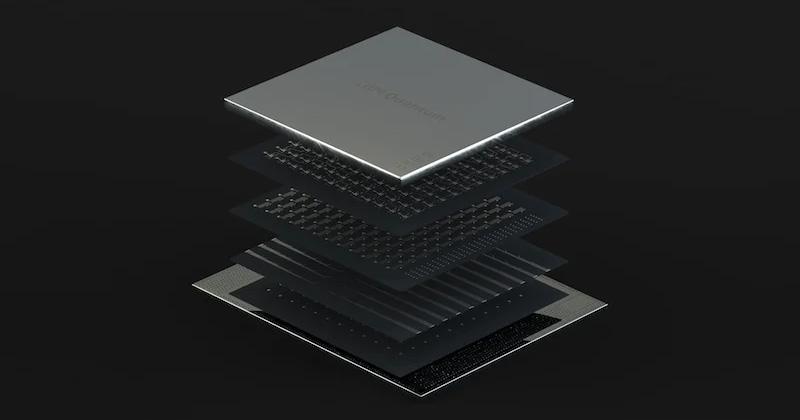
U-blox Zeroes In On Wearable Accuracy With New GNSS Chip
U-blox recently launched its new UBX-M10150-CC GNSS chip designed specifically for the positional accuracy of wearable devices. The new chip will incorporate the company's Low-Energy Accurate Positioning (LEAP) technology.

The UBX-M10150-CC GNSS chip.
U-blox's New, Compact GNSS Chip
The UBX-M10150-CC was engineered for compact wearable applications and boasts a compact footprint of 2.39 mm x 2.39 mm. Its ultra-slim design allows wearable device manufacturers to design smaller sports and smartwatches. The UBX-M10150-CC chip features upgradeable firmware, enabling manufacturers to add new capabilities over time. U-blox has released the first samples for testing, allowing companies to integrate this advanced solution into their next generation of devices.
With a power consumption of only 10 mW, the UBX-M10150-CC achieves high position accuracy across varying environments, including urban, forested areas, or even open water for swimming enthusiasts. U-blox designed the chip to adapt to signal conditions and be compatible with compact wearable antennas and external low-noise amplifiers (LNAs). U-blox ensures quality through system-level testing in IATF16949-certified facilities, adhering to ISO16750 standards for environmental testing in electrical and electronic equipment.
A LEAP Forward in Efficiency and Accuracy
Low-Energy Accurate Positioning (LEAP) is U-blox’s positioning technology that addresses the critical challenges of battery-powered devices. The company claims the technology enhances data collection duration while ensuring high accuracy and reliability in positioning. By efficiently managing energy consumption and prioritizing precise data, LEAP allows devices to operate longer without frequent recharging, maximizing functionality and usability.
LEAP technology differentiates itself from traditional GNSS tracking systems through its intelligent signal selection process. Rather than evenly distributing energy across all satellite signals, LEAP prioritizes satellites based on specific criteria to enhance accuracy. It focuses on satellites positioned above a certain elevation angle and favors signals with a direct line of sight while discarding those influenced by multipath interference. This multipath mitigation allows the chip to avoid tracking weaker signals that could introduce errors, concentrating on those with a high signal-to-noise ratio for improved position data while saving energy.

LEAP uses smart signal selection, which prioritizes signals through multipath mitigation. This prevents errors from diffracted or reflected signals and improves the overall accuracy of the wearable device.
The technology also extends to external components like low-noise amplifiers (LNA), activating them only as needed to conserve energy. Moreover, LEAP utilizes aiding data—such as almanac and ephemeris information—obtained via the internet to reduce energy-intensive processes during start-up. U-blox says these enhancements collectively result in a 50% reduction in energy consumption while maintaining high accuracy across various environments, including open-water, forest, and urban settings.
Higher Precision, Longer Charge
Let’s face it: one of the biggest driving factors of innovation is personal interests, whether it's video games, personal hobbies, or sports. And these innovations drive products to be smaller, faster, and sleeker. With the growing demand for miniaturized, more accurate devices, the launch of the UBX-M10150-CC may give wearable device manufacturers an edge in their next-generation devices. Manufacturers of wearable smart devices can now provide better positional accuracy and reduced downtime between charges.



